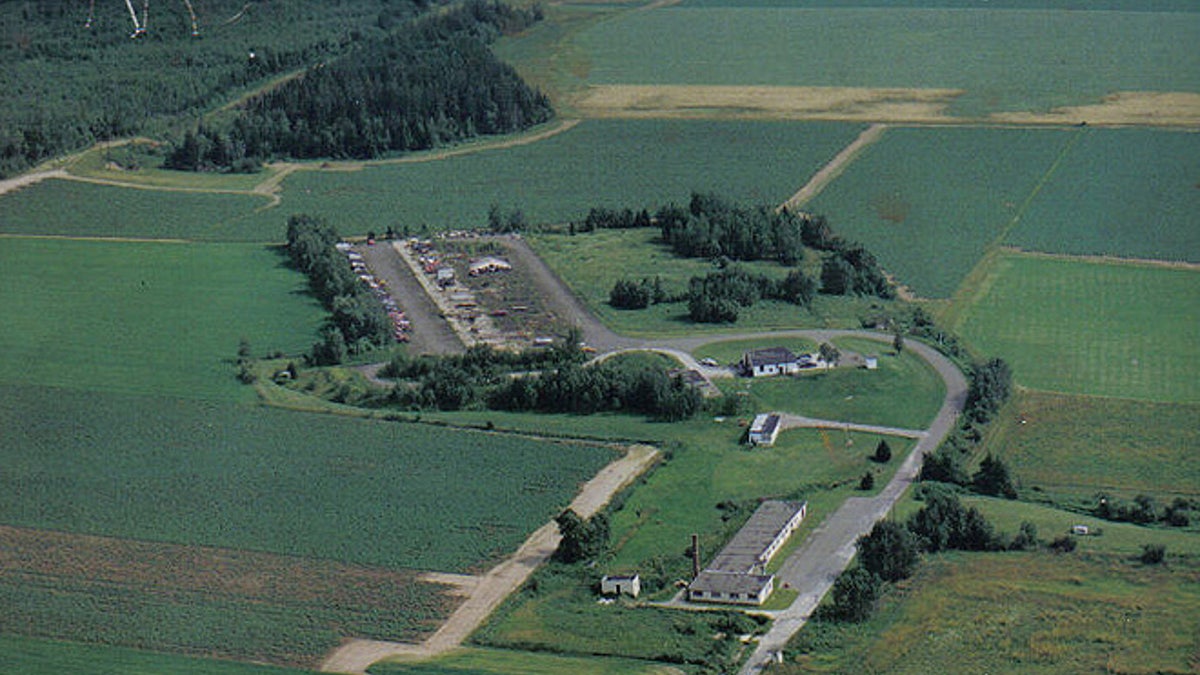
The Prentiss’ property in Maine was originally used as part of Project Nike, a U.S. Army program enacted in 1944.
One Maine couple wants you to survive the apocalypse in style.
Dave and Sue Prentiss, of the bucolic town of Limestone, are looking to sell their near-20 acre property, which comes complete with an underground missile silo -- the kind that are favored by the prepping community to be retrofitted into livable bunkers in case the end of the world is upon us.
“[D]on't worry about your home glowing in the dark,” Dave Prentiss told the Bangor Daily News. The warheads that used to be stored there weren't nuclear. If they had been nukes, I wouldn’t have touched this place on a bet.”
It's not easy to find comps for a converted missile silo, but 20th Century Castles, which is brokering the sale, estimates the value of the property at somewhere between $300,000 and $500,000.

Instead of turning one of the buildings on the property into living quarters, the couple decided to build a new two-bedroom home there between the assembly shop and the former barracks.
It was three decades ago when Prentiss and his wife, who lived in New Hampshire at the time, were house-hunting in northern Maine for a place where they could not only live, but operate his car restoration business. They found this former Nike missile launch site -- just a stone’s throw from the former Loring Air Force Base.
Prentiss said he and his wife were drawn to the property because the missile assembly and testing building on the 17-acre property was perfect for a workshop. But after 25 years, he said they want a smaller -- and more othodox --- home.
“We are looking to downsize a bit,” Prentiss told FoxNews.com. “Retirement is in sight.”
Prentiss added that he enjoyed living on the property, which was originally used as part of Project Nike (Greek for the word victory), a U.S. Army program enacted in 1944 after it was proposed by Bell Labs as a line-of-sight anti-aircraft missile system within our borders.
“It’s been great. A cool place to live,” he said. “Very quiet. Very peaceful.“It’s been heaven.”
The Nike defense program was the first of its kind and led to the development of the first operational anti-aircraft missile system in the U.S., the Nike Ajax, in 1953. The development of the Ajax led to other missiles being developed and the same technology was used by NASA in the creation of the Nike Smoke Rocket, which was used for upper atmosphere research.

Inside one of the underground silos.
Prentiss' property also contained barracks, which housed, at any given time, 100 military members that operated the facility when it was an active missile base.
“We’ve had people who were stationed here come back,” Dave recalls. “We even had a previous base commander come back.
“We didn’t know a lot about the original use of this place when we moved in, but we learned all about it over the years.”
The Nike missile sites were eventually decommissioned and the missiles were removed by the military. After the site at Limestone was shut down in the early 1960s, it went through a few private owners before the Prentisses purchased the property in 1985.
“It was really in deplorable shape,” Prentiss told the newspaper, adding that the property was overrun with weeds and scrub brush and that the buildings were in various states of disrepair.
Instead of turning one of the buildings on the property into living quarters, the couple decided to build a new two-bedroom home there between the assembly shop and the former barracks.
Beneath the surface is the massive magazine, or storehouse, for the missiles, with electrical connections and nearly 10,000 square feet of usable space.
“When we first moved in, we were always going down there to check it out, Prentiss tells FoxNews.com about having a missile silo as his basement. “It’s commonplace now. We don’t go down for months on end.”
The underground silos were used to prep and store missiles for a possible launch during the height of the cold war. The structures, below and above ground, were reinforced to withstand direct hits during a military attack.
“It’s got some of the hardest and most durable structures ever made by man,” Edward Peden, owner of 20th Century Castles, which specializes in the private sales of decommissioned missile bases, told FoxNews.com. “These old Nike sites were made of very heavy and durable concrete. It is some of the best to resist a nuclear blast.”
“And I’m sure the government put millions into retrofitting the property," he added.





















